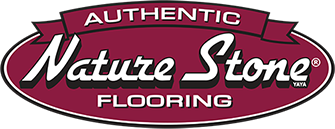The Hidden Costs of Polyaspartic Epoxy Flooring
One of the most common considerations to make when selecting a floor coating is the cost, both in the short term and long term. Thanks to a wave of online advertising and blogging, polyaspartic epoxy flooring suddenly seems like a good choice for homeowners and businesses, but be warned: there are hidden costs that must be taken into account before signing on the bottom line.
The initial expense of polyaspartic epoxy may seem low, but the long-term cost of maintenance and repairs can quickly add up, especially if it ends up needing to be replaced in a few years, as is too often the case. These floors require regular heavy duty cleaning to keep them looking their best. Further, polyaspartic epoxy is prone to cracking or chipping, which may require expensive repairs or even complete replacement, depending on the extent of the damage.
It’s also important to note that polyaspartic epoxy is not suitable for all locations, especially areas of high traffic, heavy use, or that may be damp or experience spills, such as basements and garages. Further, it may not be compatible with certain types of floors or substrates, so do your research and talk to a professional before committing.
Though many homeowners and business owners have been drawn to polyaspartic epoxy over traditional flooring options, what many fail to consider are the hidden costs associated with this so-called better option. Here are the expenses your contractor isn’t telling you about:
1. Upfront Cost
Compared to other flooring options, polyaspartic epoxy can be much more expensive per square foot, depending on the type of epoxy used and the complexity of the installation. This can quickly add up, especially in larger homes or commercial spaces. Homeowners and business owners should be prepared to spend a considerable amount of money upfront, which may not be feasible for everyone’s budget.
2. Downtime Cost
Installing polyaspartic epoxy flooring requires a curing process that can take several days to complete (and one that will fill the home or office with foul odors). During this time, the area cannot be used, resulting in potential loss of revenue for businesses or inconvenience for homeowners. Depending on the nature of the space where the flooring is installed, downtime costs can add up quickly. For businesses, they may need to shut down for a few days, while homeowners may need to make alternative living arrangements while the work is being completed.
3. Maintenance Cost
The maintenance costs of polyaspartic epoxy flooring can be expensive, and the time required to maintain it can be significant, both factors that can quickly outweigh any savings on your initial installation. Cleaning the surface requires special cleaning agents and techniques, and failure to do so can result in the flooring losing its luster and shine far quicker than you might expect. Homeowners and business owners who do not have the resources to keep up with routine maintenance may find themselves replacing the flooring much sooner than desired, which means all that money you spent having it installed in the first place is effectively wasted.
4. Preparation Cost
Sales reps often don’t tell you that installing this type of flooring requires a high level of preparation, including removing the existing floor covering, preparing the surface for installation, and much more. This process can be time-consuming and costly, especially if the existing flooring has been glued or seamed to the surface, requiring additional work to remove it. And that’s just scratching the surface. Your entire garage or basement will have to be upended for the process to move forward. Have you considered the costs, time, and labor involved?
As you can see, if you are considering polyaspartic epoxy flooring, it’s crucial to consider the hidden costs that sales people don’t tell you about. The sale pitch may sound great, but many homeowners find that their pockets are empty when all is said and done. Is it worth the risk?


